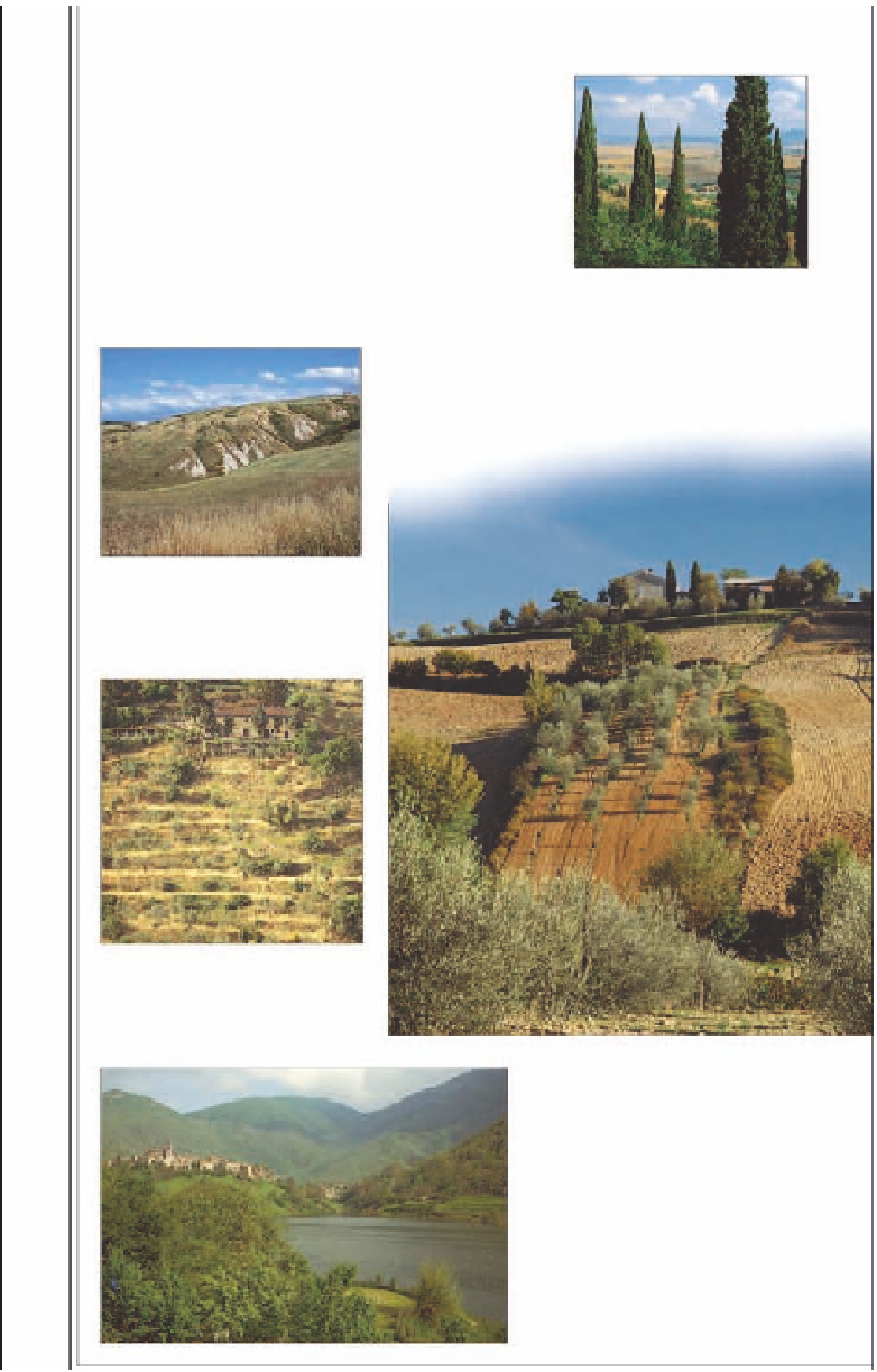Travel Reference
In-Depth Information
The Landscape of Tuscany
Tuscany is rich in wildlife, especially flowers and
the insects that feed on them, including bees,
crickets, cicadas and grasshoppers, whose song is
heard during the summer months. For years Tuscan
farmers were too poor to afford modern intensive
agricultural methods, so the region was, until recently,
still farmed by traditional methods. As a result, rural
areas have remained relatively unspoiled, a safe
haven for many species of flora and fauna - with
the exception of the songbird, which has fallen
victim to the Tuscan passion for hunting.
Cypress Trees
The flame-shaped cypress is
often planted as a windbreak
in fields and along roadsides.
Building
on hilltops
ensures a cooling
wind in summer.
The Crete
The clay landscape south of Siena
is one of bare hillocks and ravines,
denuded of topsoil by heavy rain.
Terracing
The steep hillsides are farmed by
cutting terraces and holding the
soil in place with stone walls.
TUSCAN FARMLAND
A typical Tuscan farm will
combine olive groves and
vineyards with fields of maize
and barley to feed the cattle
and chickens.
Garfagnana Landscape
Much of this region is an
unspoilt national park
where deer, boar, martens
and eagles are protected.





































